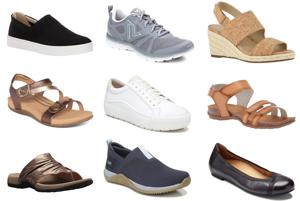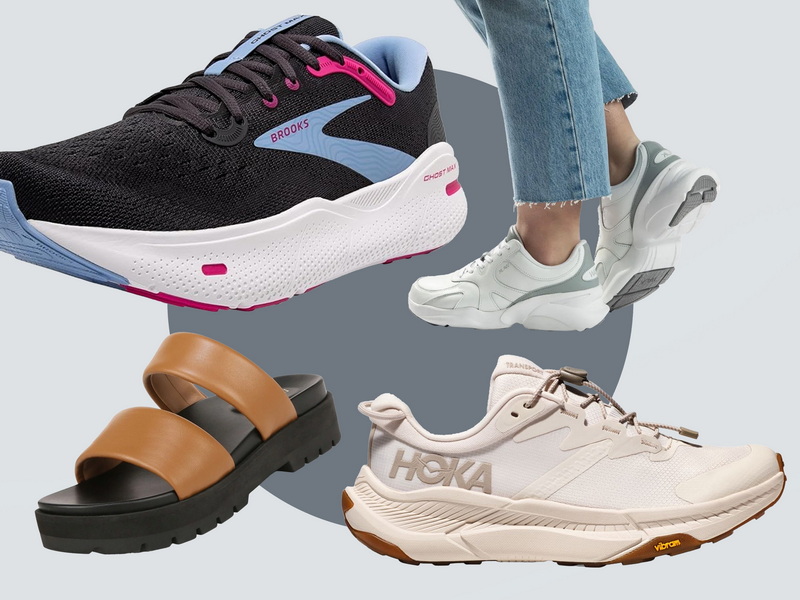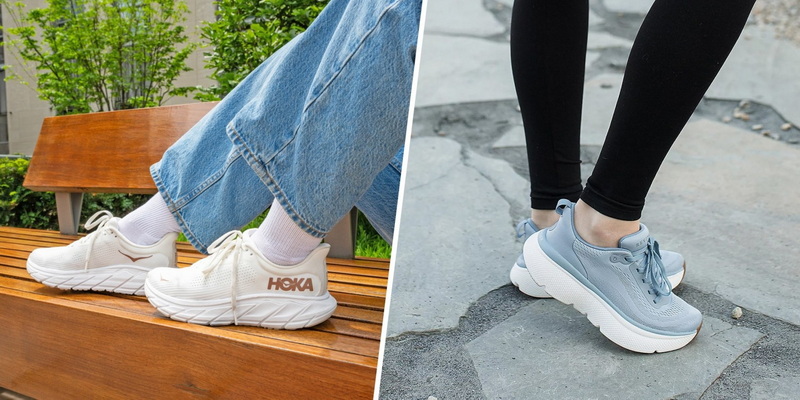Content Menu
● Understanding Shoe Size Conversion
● Factors Influencing Shoe Fit
● Conversion Charts
● How to Measure Your Feet
● Tips for Buying Women's Shoes as a Man
● Common Myths About Shoe Sizing
● The Importance of Comfort
● Fashion Trends in Women's Footwear
● Practical Considerations
● Conclusion
● FAQ
>> 1. How do I convert my men's shoe size to women's?
>> 2. Are there any exceptions to the conversion rule?
>> 3. What if I have wide feet?
>> 4. Can I wear women's athletic shoes if I usually wear men's?
>> 5. Is there a difference in quality between men's and women's shoes?
When it comes to shoe shopping, understanding size conversions between men's and women's shoes is crucial for finding the perfect fit. This article will explore how men's shoe sizes translate to women's sizes, the factors that affect shoe sizing, and practical tips for selecting the right pair.

Understanding Shoe Size Conversion
Shoe Size Basics
Typically, in the U.S. sizing system, women's shoe sizes are approximately 1.5 to 2 sizes larger than men's. This means that if you wear a men's size 8, you would generally wear a women's size 9.5 or 10.
- Men's Size 7 = Women's Size 8.5
- Men's Size 8 = Women's Size 9.5
- Men's Size 9 = Women's Size 10.5
- Men's Size 10 = Women's Size 11.5
This straightforward rule of thumb can help you navigate the often confusing world of shoe sizes.
Factors Influencing Shoe Fit
Width and Shape
While converting sizes is essential, it's also important to consider the width and shape of the shoes. Women's shoes are generally narrower than men's shoes, which can affect comfort and fit. If you're a man looking to buy women's shoes, you might want to consider opting for a wider fit or trying on different styles to ensure comfort.
Brand Variations
Different brands may have slight variations in their sizing standards. Therefore, it's always advisable to check the specific brand's size chart before making a purchase. Some brands might run larger or smaller than others, so personal experience with a brand can be invaluable.
Conversion Charts
US Shoe Size Conversion Chart
Here is a simplified conversion chart for quick reference:
| Men's Size | Women's Size |
| 6 | 7.5 |
| 7 | 8.5 |
| 8 | 9.5 |
| 9 | 10.5 |
| 10 | 11.5 |
This table provides a quick glance at how to convert sizes effectively.
How to Measure Your Feet
Knowing your exact foot measurement can significantly improve your chances of finding the right fit when converting between men's and women's shoes.
1. Gather Materials: You will need a piece of paper, a pencil, and a ruler.
2. Trace Your Foot: Place your foot on the paper and trace around it while standing straight.
3. Measure Length and Width: Use the ruler to measure the longest part of your foot (length) and the widest part (width).
4. Consult Size Charts: Compare your measurements with size charts from specific brands to find your equivalent size in women's shoes.
Tips for Buying Women's Shoes as a Man
Try Before You Buy
If possible, always try on shoes before purchasing them, especially when converting sizes from men's to women's. This allows you to assess comfort and fit firsthand.
Consider Style Differences
Be aware that certain styles may fit differently based on design elements such as heel height or toe shape. For instance, athletic shoes may have more leeway in fit compared to dress shoes.
Check Return Policies
When shopping online, ensure that you understand the return policies in case the shoes do not fit as expected.

Common Myths About Shoe Sizing
Myth: All Brands Fit the Same
One common misconception is that all shoe brands fit identically based on size alone. However, this is not true; each brand has its unique sizing system and design philosophy.
Myth: Men Can't Wear Women's Shoes
Another myth is that men cannot wear women's shoes at all. In reality, many men find women's styles more comfortable or aesthetically pleasing, especially in casual footwear or sneakers.
The Importance of Comfort
Why Comfort Matters
Comfort should be your top priority when choosing footwear. Ill-fitting shoes can lead to various foot problems such as blisters, calluses, or even long-term issues like plantar fasciitis or bunions. Women's shoes often feature different cushioning technologies and arch support systems tailored for female feet; however, many of these features can also benefit men.
Trying Different Styles
When exploring women's shoes, consider trying various styles such as flats, sneakers, sandals, and boots to see what feels best for you. For example:
- Sneakers: Often designed with more padding and support.
- Flats: Can provide a stylish yet comfortable option for casual outings.
- Boots: May vary greatly in width; some styles offer adjustable features for better fit.
Fashion Trends in Women's Footwear
Current Trends
The world of women's footwear is constantly evolving with new trends emerging each season. As a man shopping for women's shoes, staying informed about current trends can help you make stylish choices that suit your personal taste:
- Chunky Sneakers: These have become increasingly popular due to their comfort and retro aesthetic.
- Combat Boots: A versatile option that pairs well with various outfits.
- Platform Shoes: Offering height without sacrificing comfort; they are stylish yet practical.
Understanding these trends can help you select footwear that not only fits well but also looks great.
Practical Considerations
Budgeting for Shoes
When shopping for shoes—whether men's or women's—consider your budget. Women's shoes can sometimes be more expensive due to design details or materials used. However, many brands offer sales or discounts that can help you find quality footwear without breaking the bank.
Sustainable Options
If sustainability is important to you, consider looking into brands that focus on eco-friendly practices in their manufacturing processes. Many companies now offer vegan options or use recycled materials in their footwear production.
Conclusion
Understanding how men's shoe sizes convert to women's sizes is essential for anyone looking to expand their footwear options. By following conversion guidelines and considering factors like width and brand variations, men can confidently shop in women's departments without fear of mis-sizing. Additionally, being aware of current fashion trends and prioritizing comfort will ensure that your choices not only look good but feel good too.

FAQ
1. How do I convert my men's shoe size to women's?
To convert your men's shoe size to women's, add approximately 1.5 to 2 sizes to your men's size.
2. Are there any exceptions to the conversion rule?
Yes, some brands may have unique sizing that deviates from standard conversions; always check specific brand charts when possible.
3. What if I have wide feet?
If you have wide feet, consider trying on wider styles in women's shoes or opt for brands known for accommodating wider fits.
4. Can I wear women's athletic shoes if I usually wear men's?
Absolutely! Many men wear women's athletic shoes successfully; just ensure you check the fit since they may feel narrower.
5. Is there a difference in quality between men's and women's shoes?
Quality varies by brand rather than gender; both men's and women's shoes can be made with high-quality materials depending on the manufacturer.

















